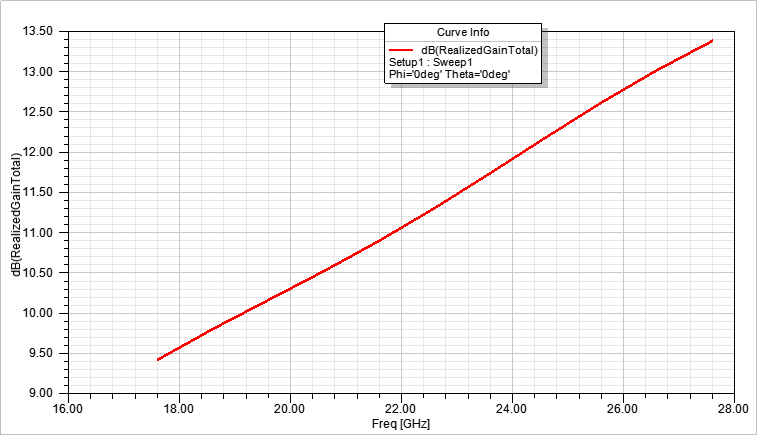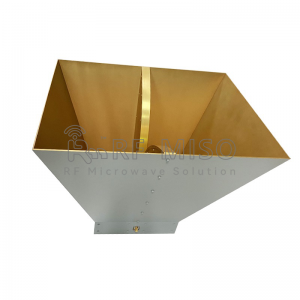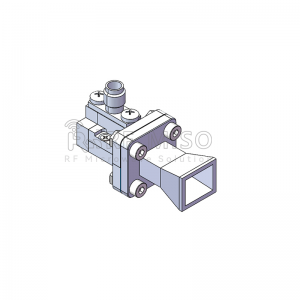Antenna gain refers to the radiated power gain of an antenna in a specific direction relative to an ideal point source antenna. It represents the radiation capability of the antenna in a specific direction, that is, the signal reception or emission efficiency of the antenna in that direction. The higher the antenna gain, the better the antenna performs in a specific direction and can receive or transmit signals more efficiently. Antenna gain is usually expressed in decibels (dB) and is one of the important indicators for evaluating antenna performance.
Next, I will take you to understand the basic principles of antenna gain and how to calculate antenna gain, etc.
1. Principle of antenna gain
Theoretically speaking, the antenna gain is the ratio of the signal power density generated by the actual antenna and the ideal point source antenna at a certain position in space under the same input power. The concept of a point source antenna is mentioned here. What is it? In fact, it is an antenna that people imagine to emit signals uniformly, and its signal radiation pattern is a uniformly diffused sphere. In fact, antennas have radiation gain directions (hereinafter referred to as radiation surfaces). The signal on the radiation surface will be stronger than the radiation value of the theoretical point source antenna, while the signal radiation in other directions is weakened. The comparison between the actual value and the theoretical value here is the gain of the antenna.
The picture shows the RM-SGHA42-10 product model Gain data
It is worth noting that the passive antennas commonly seen by ordinary people not only do not enhance the transmission power, but also consume the transmission power. The reason why it is still considered to have gain is because other directions are sacrificed, the radiation direction is concentrated, and the signal utilization rate is improved.
2. Calculation of antenna gain
Antenna gain actually represents the degree of concentrated radiation of wireless power, so it is closely related to the antenna radiation pattern. The general understanding is that the narrower the main lobe and the smaller the side lobe in the antenna radiation pattern, the higher the gain . So how to calculate the antenna gain? For a general antenna, the formula G (dBi) = 10Lg {32000/(2θ3dB, E × 2θ3dB, H)} can be used to estimate its gain. formula,
2θ3dB, E and 2θ3dB, H are the beam widths of the antenna on the two main planes respectively; 32000 is the statistical empirical data.
So what would it mean if a 100mw wireless transmitter is equipped with an antenna with a gain of +3dbi? First, convert the transmit power into signal gain dbm. The calculation method is:
100mw=10lg100=20dbm
Then calculate the total transmit power, which is equal to the sum of transmit power and antenna gain. The calculation method is as follows:
20dbm+3dbm=23dbm
Finally, the equivalent transmit power is recalculated as follows:
10^(23/10)≈200mw
In other words, a +3dbi gain antenna can double the equivalent transmit power.
3. Common gain antennas
The antennas of our common wireless routers are omnidirectional antennas. Its radiation surface is on the horizontal plane perpendicular to the antenna, where the radiation gain is greatest, while the radiation above the top and below the bottom of the antenna is greatly weakened. It's a bit like taking a signal bat and flattening it a little.
Antenna gain is just the "shaping" of the signal, and the gain size indicates the utilization rate of the signal.
There is also a common plate antenna, which is usually a directional antenna. Its radiation surface is in the fan-shaped area directly in front of the plate, and the signals in other areas are completely weakened. It's a bit like adding a spotlight cover to a light bulb.
In short, high-gain antennas have the advantages of longer range and better signal quality, but they must sacrifice radiation in individual directions (usually wasted directions). Low-gain antennas generally have a large directional range but a short range. When wireless products leave the factory, manufacturers generally configure them according to the usage scenarios.
I would like to recommend a few more antenna products with good gain for everyone:
Post time: Apr-26-2024











